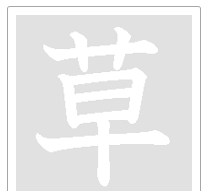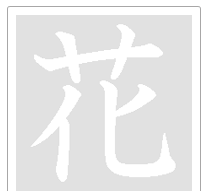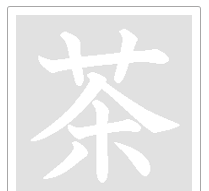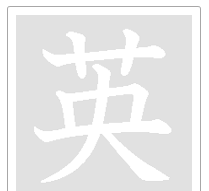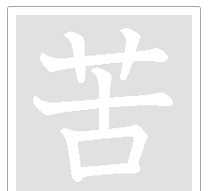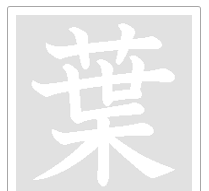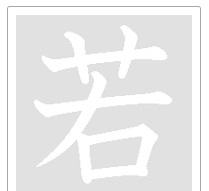 |
||||
 |
||||
Kanji composed with Radicals (13) (13)
Grass |
||||||||||||||||||||
|
||||||||||||||||||||
| The radical on top of the following characters looks like a flattened サ. It means "grass"; hence, the following kanji: | ||||||||||||||||||||
|
草 L6 meaning:: grass on reading: ソウ kun reading: くさ Beneath
the "grass" radical we see 早
which looks
like a 日 radical
("the sun") above the number "ten" (十).
Keeping in mind that this is only a memory aid (the history of this
character is different) you could use "grass needs lots of sun" as
a memory aid. |
|
|||||||||||||||||||
|
花 L22 meaning:: flower on reading: カ kun reading: はな This
character means "flower". Let's create a silly picture in our
minds to remember this one: A man is lying in the grass and looking at
flowers. "He lies in the grass and looks at the flowers".
Why "he"? Because ヒ
is the hi
sound, which is close to the English "he". Remember, these are
only supposed to be aids to memorization. |
|
|||||||||||||||||||
|
茶 L2 meaning:: tea on reading: チャ We
could look at this one as "a man uses ten drops of water to make tea
from grass". We get the "man" from the 人 which
straddles the "ten" (十);
the "drops of water" are the dots under the cross bar of the 十. "Grass" is of course the radical on top. |
|
|||||||||||||||||||
|
英 L4 meaning:: hero; England on reading: エイ kun reading: ひで In
ancient China, too, it seems that heroes were crowned with a grass
ring! You could create a memory aid in this way: "A hero with broad
shoulders is crowned with grass". We are treating this piece: 央,
as "the broad-shouldered hero". If you look more closely you
will see that this element looks like a 人
(ひと)
with a sort of a rectangle drawn on top. Let's take the "rectangle" for the
"shoulders" and then with the "grass" element above you have the whole kanji described in an
easy-to-remember fashion. |
|
|||||||||||||||||||
|
苦 L16 meaning:: bitter, suffer on reading: ク kun reading: にが (い)、くる (しい)、くる (しむ) Some
plants taste bitter indeed! And bitterness leads you to suffering.
Imagine you were forced to eat a bitter grass with a powerful smell.
How would you do it? You might "pinch your nose when opening your
mouth to eat the bitter grass". How do we get this? Imagine 十
as your
fingers pinching your nostrils shut. 口 is your open
mouth, and of course we have "the bitter grass" about to enter
your mouth. |
|
|||||||||||||||||||
|
葉 L6 meaning:: leaf on reading: ヨウ kun reading: は If
we break this character down, you see "grass" above 世
with 木
below. 世,
as it turns out, looks remarkably like せ
and セ
- and this
is no coincidence. 世,
which can be read se, is indeed the character from which both
the hiragana and katakana se symbols were developed. So, we
could remember the character this way, "trees say things to grass
with their leaves." Of course, I am making an odd sort of a pun
here, by using the sound for 世
as meaning
"to say" in English. |
|
|||||||||||||||||||
|
若 L36 meaning: young on reading: ジャク kun reading: わか (い) Here's a silly way to remember this character: "young people are forbidden to eat grass". Let this element, 右, represent an X blocking the mouth, with the grass above. |
|
|||||||||||||||||||

